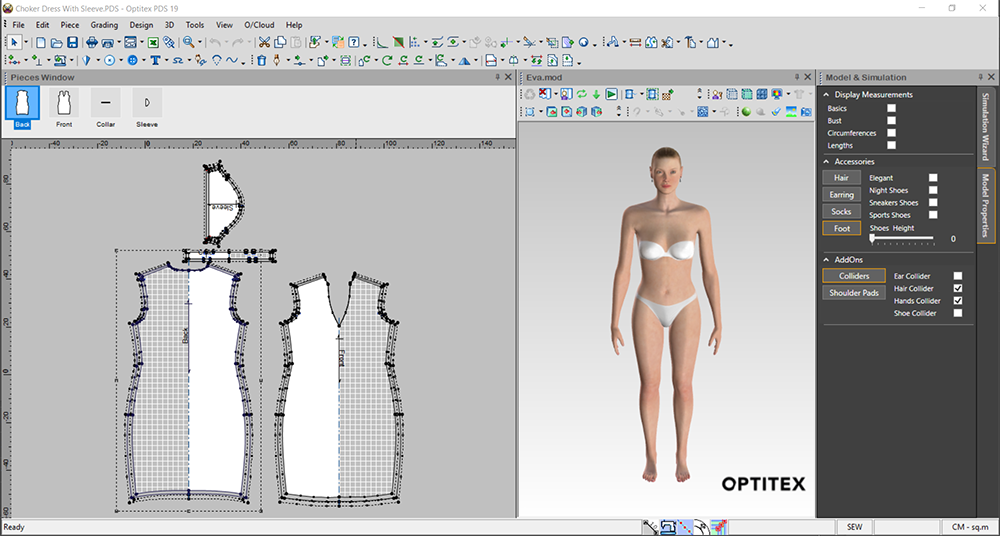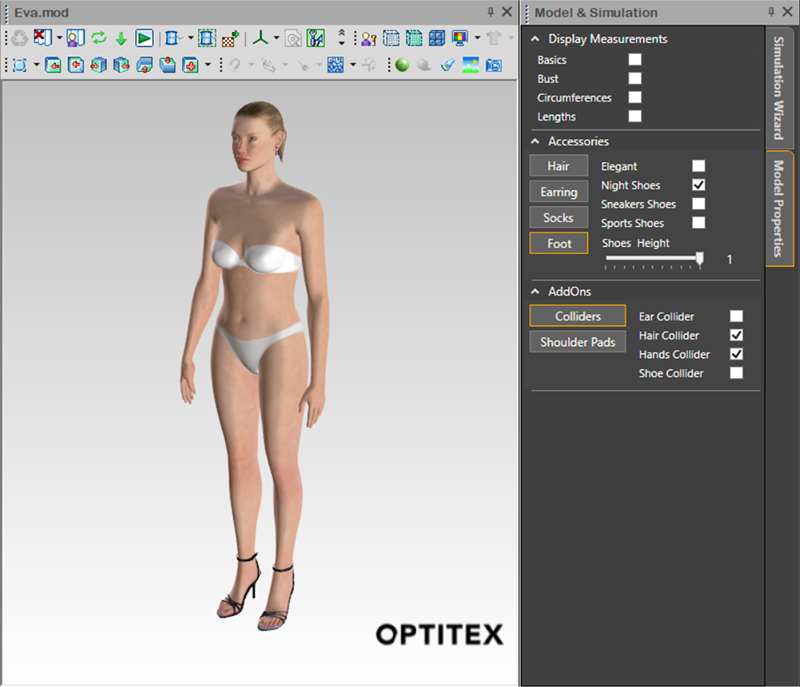Loading an Avatar
You can load a model, AKA avatar into the PDS, when you want to view your pattern on a customized avatar. This allows you to see how the pattern will fit when simulated, and provides a realistic look and feel on an avatar not only in the 3D space.
Optitex provides a set of already defined avatars in the sample pack and these can be easily loaded into the PDS. You can also create and customize avatars prior to loading them, using the Avatar Editor. For more information, see Avatar Editor.
 Note:
Note:
-
When loading the avatar, only attributes that were pre-defined will be displayed in the Model Properties. For example, if the avatar was defined with sizes, they will appear in the Sizes area, if not, no sizes will be displayed.
-
All changes to avatars, including sizes, poses, etc. must be done prior to loading the avatar in the PDS. If a change is needed, for example you need another size, then you must create the new size using the Avatar Editor, save as an MOD and then reload into the PDS.
- Starting from version O/19, if you want to load an Alvanon model (.avao file) you must have an Alvanon license (APF file) located on your machine. to view more information.
To load an avatar:
-
In the 3D Window, from the 3D Toolbar, click
 .
.
The Open dialog is displayed:
-
From the Files of Type drop-down list, select the type of file you are loading, then select the file. For more information about the different types of files that are supported, see Load Model.
Once you open an avatar, you can view the sizes and properties that were defined in the Avatar Editor application. -
Click
 to open
the Model & Simulation
dialog:
to open
the Model & Simulation
dialog:
The Simulation Wizard tab provides: -
Sizes: Displays all the sizes that were defined for the Avatar. You can select a different size, if for example you want to view your "small" sized pattern on a "small" sized avatar.
-
Final Poses: Displays all poses that were defined for the Avatar. You can select a different pose, for example a final pose and then view your avatar/pattern in a final pose.

The Model Properties tab provides:
-
Accessories: Displays all the accessories that were defined for the Avatar. You can change the hairstyle, add/remove earrings, socks, shoes and change the face, etc.
-
Add-Ons: Displays all available add-ons. You can add/remove colliders, and/or shoulder pads.
-
Display Measurements: Allows you to turn on/off avatar measurements (the measurements can only be displayed in T2A pose)
-
If you want to change the attributes of the avatar, for example, if you want to change the shoes, this can be done in the Accessories section.
-
Expand Accessories and then click on Foot.
Here you can see Elegant was defined as the default.
-
Select the required checkbox, for example, Night Shoes.
The shoes are automatically changed:
 See also:
See also: